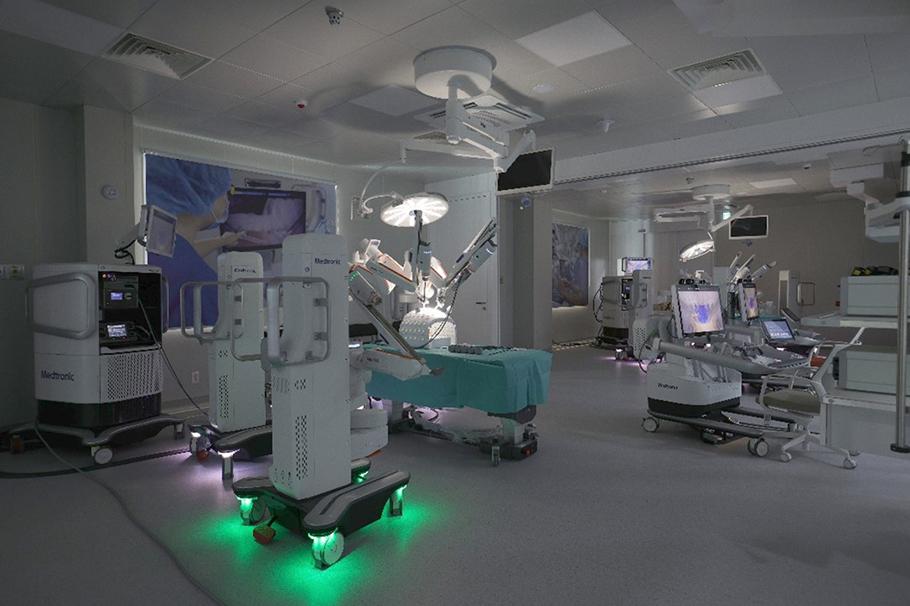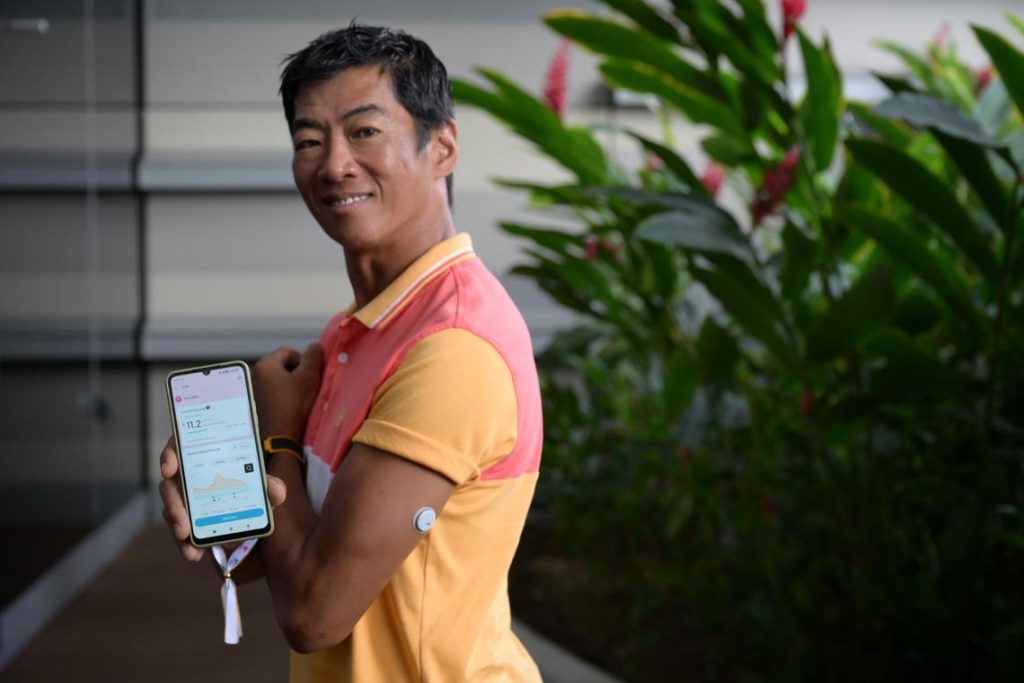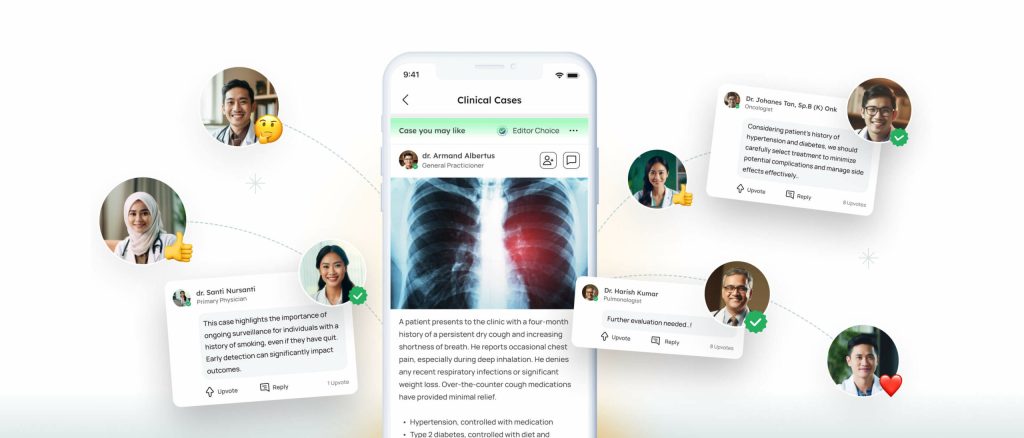Updated on 17 March 2025
Medical technology innovations across Asia are transforming healthcare delivery in 2025. This month brings exciting developments in Asian medical technology innovations. Yonsei University has expanded its robotics training centre. Singapore has launched an AI-powered diabetes management system. Additionally, Indonesia has adopted generative AI for clinical support. These medical technology innovations in Asia demonstrate how digital solutions are enhancing patient care and clinical practice.
Asian Medical Technology Innovations: Yonsei University Expands Robot Training
The Yonsei University Health System (YUHS) has significantly broadened its medical robotics programme. Recently, it relaunched its training facility with an expanded focus on AI-powered medical devices.
The Korea Surgical Robot Training Center has been renamed the Korea Medical Robot Center. This change marks an important evolution in its mission. Moreover, this relaunch coincides with the second phase of the government’s Domestic Medical Device Education and Training Support Center project. This initiative aims to evaluate locally-developed medical technologies. Furthermore, it seeks to train healthcare professionals in their effective use.
YUHS initially joined this government initiative in 2020. Since then, it has contributed to the national effort to strengthen South Korea’s domestic medical device industry. Consequently, the expanded centre will now offer more comprehensive training programmes. These programmes encompass a wider range of robotic and AI-enhanced medical technologies.
Beyond local training capabilities, YUHS has announced plans for international education. Specifically, they will provide advanced educational opportunities through overseas trips to partner companies. As a result, Korean healthcare professionals can gain exposure to global developments in medical robotics. They can then bring that expertise back to benefit patients throughout the country.
The expansion reflects the growing importance of robotics and AI in modern surgical practices. In addition, it highlights their role in medical care delivery. As these technologies become more sophisticated and widespread, specialised training centres like the one at Yonsei University play a crucial role. Therefore, healthcare professionals can harness their full potential safely and effectively.

Medical Technology Innovations in Singapore: AI-Powered Diabetes Management
Singapore’s Tan Tock Seng Hospital (TTSH) has unveiled an innovative digital solution for diabetes management. Specifically, it combines continuous glucose monitoring (CGM) technology with artificial intelligence.
The new integrated system is called CARB-CGM. It pairs BUZUD’s continuous glucose monitoring device with an AI-powered mobile application. As a result, this comprehensive solution offers several advanced features. These features are designed to improve diabetes management for patients requiring multiple daily insulin doses.
Firstly, it provides minute-by-minute glucose readings for real-time monitoring. Secondly, it features AI-powered photo analysis that estimates carbohydrate content in meals. Thirdly, it offers personalised insulin dosage recommendations based on health data analysis. Finally, it automatically calculates insulin sensitivity factor.
Dr. Daniel Chew, chairperson of TTSH’s Medicine Division and adjunct associate professor, highlighted the system’s significant advantage. “It takes out the guesswork on insulin administration,” he explained. This addresses a critical challenge for insulin-dependent patients. Indeed, miscalculations in dosage can lead to dangerous fluctuations in blood sugar levels. These fluctuations can be either abnormally high (hyperglycaemia) or low (hypoglycaemia).
The development of CARB-CGM stems from TTSH’s ongoing research partnership with BUZUD. Consequently, this collaboration exemplifies how hospitals and medical technology companies can work together. Together, they create practical solutions that address specific patient needs.
For patients with diabetes who struggle with complex insulin dosing calculations, this AI-assisted approach could significantly improve treatment adherence. Moreover, it could enhance health outcomes. By combining continuous monitoring with intelligent analysis, the system helps bridge a crucial gap. Specifically, it connects professional healthcare guidance with daily self-management.#

Asia’s Medical Technology Innovations: Indonesian Hospital Adopts Generative AI
A regional hospital in West Java, Indonesia, is embracing generative artificial intelligence. Their goal is to enhance medical reference capabilities and support clinical decision-making.
The Rumah Sakit Umum Daerah (RSUD) Umar Wirahadikusumah Sumedang has partnered with Docquity. This doctors’ networking platform will implement its Dx platform as part of the hospital’s digital transformation strategy. Therefore, healthcare professionals will have access to an AI-powered medical resource platform. It integrates with PubMed, the globally recognised database of peer-reviewed medical research.
The platform provides several key benefits for healthcare professionals. First of all, it offers access to relevant medical cases based on patient presentations. Additionally, it provides up-to-date international medical standards and guidelines. Furthermore, it delivers current research findings applicable to clinical practice.
Hospital director Dr. H. Enceng emphasised the importance of keeping medical staff informed. “Medical science is constantly evolving,” he stated. “Hence, keeping our doctors well-informed with the latest research is crucial.”
The implementation at RSUD Umar Wirahadikusumah follows a successful initial deployment. Previously, Dx was used as a learning tool for staff at community health centres throughout Sumedang district last year. Consequently, this progressive expansion demonstrates effective scaling of generative AI technologies. They have moved from primary care settings to more complex hospital environments.
This development is particularly significant for regional healthcare facilities in developing nations. In these locations, access to the latest medical literature and expertise may be limited. The limitations often stem from geographical and resource constraints. However, by leveraging AI to democratise access to medical knowledge, regional hospitals can enhance their capabilities. As a result, they can improve diagnostic accuracy and treatment decisions. Ultimately, this may lead to better patient outcomes across diverse geographical areas.

How Medical Technology Innovations in Asia Are Reshaping Healthcare
These recent developments highlight the accelerating adoption of advanced technologies across Asian healthcare systems. Several key trends are emerging in medical technology innovations across Asia:
Collaborative Innovation Ecosystems
The partnerships between healthcare providers and technology companies demonstrate collaborative approaches to innovation. For instance, TTSH works with BUZUD, while RSUD Umar Wirahadikusumah partners with Docquity. Moreover, government involvement, as seen in South Korea’s medical device education initiative, further strengthens these innovation ecosystems.
Focus on Practical Applications
Rather than pursuing technology for its own sake, these Asian medical technology innovations address specific healthcare challenges. Firstly, they improve surgical capabilities through robotics training. Secondly, they enhance diabetes management through AI-assisted dosing. Lastly, they support clinical decision-making through AI-powered knowledge platforms.
Bridging Healthcare Gaps
Digital technologies in Asia are increasingly deployed to address healthcare disparities. For example, AI-powered applications can extend specialised medical knowledge to regions with limited access to specialists. Additionally, robotics training can help standardise advanced surgical techniques across different healthcare settings.
Patient-Centred Design
The CARB-CGM system exemplifies how digital health solutions evolve to better align with patients’ daily lives. Therefore, by simplifying complex aspects of disease management, these technologies can improve treatment adherence. Furthermore, they enhance patient empowerment in self-care activities.
Future of Asian Medical Technology Innovations in Healthcare
As these medical technology innovations in Asia mature and become more widely implemented, several transformative changes may emerge in healthcare delivery systems:
Enhanced Clinical Decision Support
AI-powered platforms like Docquity’s Dx represent an early stage in clinical decision support evolution. Initially, they provide access to medical knowledge. Subsequently, future iterations may combine real-time patient data with vast medical knowledge bases. Consequently, they could suggest diagnostic pathways and treatment options. These would be tailored to individual patient profiles.
Democratised Medical Expertise
Advanced training centres like Yonsei’s Korea Medical Robot Center help disseminate specialised skills. As a result, these skills spread more widely throughout healthcare systems. Therefore, this could gradually reduce geographical disparities in access to advanced medical procedures.
Integrated Care Management
Solutions like CARB-CGM point toward more comprehensive disease management platforms. First, they integrate monitoring devices. Then, they incorporate analysis tools. Finally, they provide treatment guidance. Similarly, comparable approaches could be applied to other chronic conditions. These conditions typically require complex self-management.
AI-Human Collaboration
Rather than replacing healthcare professionals, these Asian medical technology innovations demonstrate AI’s supportive role. On one hand, AI provides data analysis, knowledge access, and decision support. On the other hand, medical professionals can focus on aspects of care requiring human judgment and empathy.
Conclusion: The Future of Medical Technology Innovations in Asia
The recent medical technology innovations in Asia, showcased by Yonsei University Health System, Tan Tock Seng Hospital, and RSUD Umar Wirahadikusumah, represent significant advances in healthcare’s digital transformation. These Asian medical technology innovations in robotics, artificial intelligence, and integrated monitoring systems are enhancing capabilities to deliver more precise, informed, and accessible care.
As these medical technology innovations continue to evolve across Asia, they address persistent healthcare challenges—from specialist shortages to treatment complexity and knowledge gaps—ultimately improving patient outcomes across diverse healthcare settings.
Asia is clearly emerging as a dynamic hub for medical technology innovations, combining technological sophistication with practical applications that address real-world healthcare needs. These medical technology innovations from Asia merit close attention from healthcare leaders and policymakers worldwide as potential models for broader implementation.
Key Takeaways
- Yonsei University Health System has expanded its medical robotics programme, transforming its surgical robot training centre into the Korea Medical Robot Center with a broadened focus on AI-powered medical devices.
- Tan Tock Seng Hospital has introduced CARB-CGM, an integrated diabetes management system that pairs continuous glucose monitoring with AI-powered carbohydrate estimation and personalised insulin dosing recommendations.
- A regional hospital in West Java, Indonesia has implemented generative AI technology to enhance its medical reference capabilities, connecting healthcare professionals with up-to-date research and clinical guidelines.
- These innovations demonstrate how collaborative partnerships between healthcare providers, technology companies, and government initiatives are accelerating digital transformation in healthcare across Asia-Pacific.
- As these technologies mature, they promise to enhance clinical decision support, democratise medical expertise, and create more integrated approaches to disease management.



